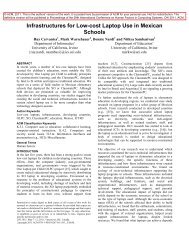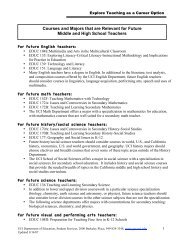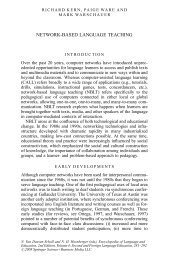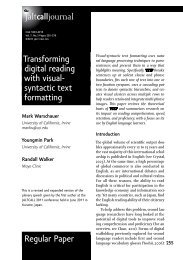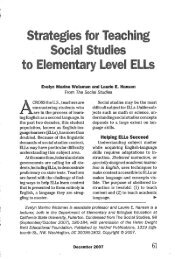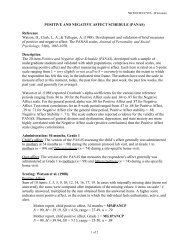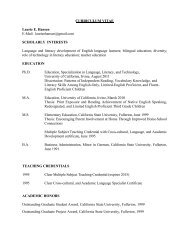A Sense of Proportion: Using perception to ground number symbols
A Sense of Proportion: Using perception to ground number symbols
A Sense of Proportion: Using perception to ground number symbols
Create successful ePaper yourself
Turn your PDF publications into a flip-book with our unique Google optimized e-Paper software.
Percival G. Matthews<br />
University <strong>of</strong> Notre Dame<br />
estimation tasks. Simply put, perceived differences in magnitude are somewhat dis<strong>to</strong>rted relative<br />
<strong>to</strong> actual differences in magnitude because our perceptual system is sensitive <strong>to</strong> ratios. For<br />
example, when presented with dot arrays, the difference between 10 and 20 dots is perceived as<br />
the same as the difference between 20 and 40 dots or the difference between 40 and 80 dots,<br />
because the ratios between the pairs is constant. 3<br />
As a result, when people are asked <strong>to</strong> estimate<br />
how many dots are in various arrays, presented one at a time, plotting the estimates vs. the actual<br />
<strong>number</strong>s <strong>of</strong> dots in the arrays leads <strong>to</strong> a function like the one presented below (Indow & Ida,<br />
1977; Izard & Dehaene, 2008; Taves, 1941).<br />
'!!"<br />
!"#$%&'($)"*+$&,-$<br />
*.-,-$.-,-/$<br />
!"#$"%&"'!"#$%&'()*!<br />
&!"<br />
%!"<br />
$!"<br />
#!"<br />
!"<br />
.,-/,!<br />
+,-.,!<br />
/,-0,!<br />
!" #!" $!" %!" &!" '!!"<br />
!!!($)*+,!"#$%&'()*!<br />
FIGURE: When estimating how many dots are in various individual arrays like the one<br />
presented on the left, graphs <strong>of</strong> median estimates vs. the actual stimulus <strong>number</strong> usually look like<br />
the graph on the right.<br />
Past research has shown that our abilities <strong>to</strong> discriminate between pairs <strong>of</strong> symbolic<br />
<strong>number</strong>s follow similar rules. The seminal work by Moyer and Landauer (1967) is perhaps the<br />
most well known <strong>of</strong> these studies. In that experiment, the authors presented adult subjects with<br />
3 This is provided that a person is required <strong>to</strong> answer quickly and without counting – an<br />
estimation at a glance.<br />
6



